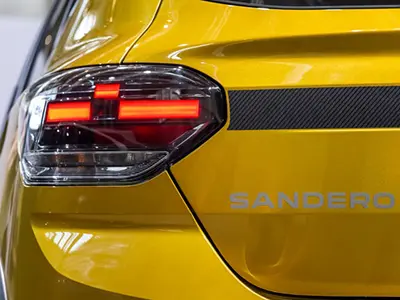
The time is approaching when Dacia cars will become even more technologically advanced, and the first sign of this was the recent presentation for the British market. The company unveiled updated versions of its key models – the Sandero, Sandero Stepway, and the versatile seven-seat Jogger. The most talked-about innovation was the introduction of a hybrid powertrain, which will be offered exclusively on the Stepway and Jogger models, and these cars won't reach customers until 2026. This approach allows the brand's engineers to carefully adapt the new technology to the character of popular city models without compromising their core advantages of practicality and reasonable price.
At the heart of the new model will be the Hybrid 155 hybrid system, a design already tested on the larger Bigster crossover. It is based on a combination of a 1.4-liter gasoline engine producing 108 horsepower and a 49 horsepower electric motor, supplemented by a starter-generator. The total output of the unit reaches 154 horsepower with 170 Nm of torque, which is quite impressive compared to the current engines in the Sandero lineup. A 1.4 kWh battery is provided for short-term pure electric driving, and power delivery is managed by a continuously variable automatic transmission, which offers the driver several operating modes for optimal use of both the gasoline and electric components.
The manufacturer is reserving official fuel consumption and acceleration figures for a more opportune time, but we already have some benchmarks. In the significantly heavier Bigster, the same hybrid system reported a fuel economy of approximately 3.3 liters per hundred kilometers (62.5 mpg) in city driving, while on the highway, the fuel consumption increased to approximately 4.3 liters (62.5 mpg). Given the significantly lighter weight of the Sandero Stepway, there's every reason to believe its fuel economy will be even more impressive. Along with the introduction of the hybrid, engineers also addressed conventional engines, introducing an updated version of the base TCe 100 powertrain. This three-cylinder, 1.0-liter gasoline engine now produces 99 horsepower, a ten-horsepower increase over the previous version.
The exterior of the entire model range has also undergone significant changes, emphasizing its modernity. The front end of the vehicles now features new LED headlights with an inverted-T light signature, harmoniously matching the redesigned radiator grille, while the rear lights feature a distinctive pixelated design. Crossover-style vehicles such as the Sandero Stepway and Jogger are available with reinforced body cladding made of Starkle, a material made from 20 percent recycled plastic. The palette of exterior colors has been expanded with new shades, and customers will have access to fresh wheel designs. Inside, changes are aimed at improving comfort and durability: new air deflectors, more wear-resistant seat upholstery, a redesigned steering wheel for improved ergonomics, and a multimedia system with an enlarged ten-inch screen instead of the previous eight-inch one.

